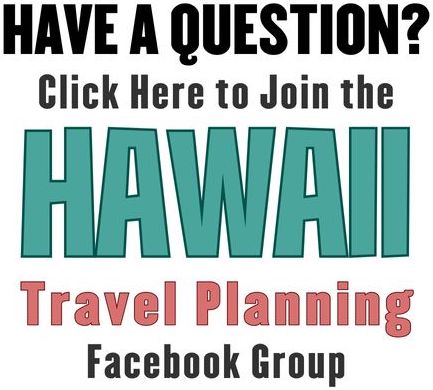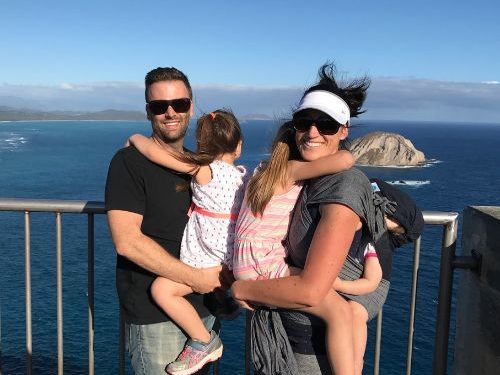What Not to Do in Hawaii: 27 Essential Tips for a Memorable Vacation
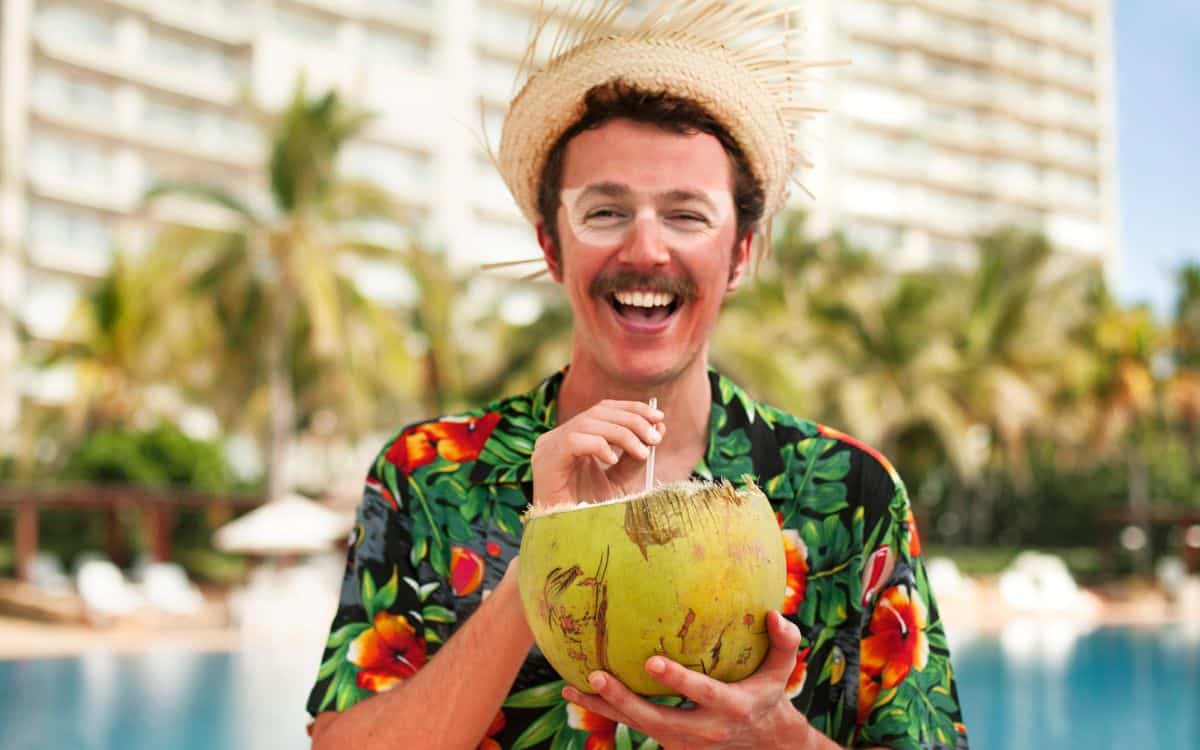
What Not to Do in Hawaii
- Research which island to visit beforehand and avoid planning a tight itinerary.
- Respect Hawaii’s natural environment by avoiding touching wildlife, damaging coral reefs, and using only reef-safe sunscreen.
- Be mindful of local culture by avoiding referring to people who live in Hawaii as “Hawaiian” and practicing driving etiquette while exploring the islands.
- Consider renting a car for a stress-free and flexible experience while exploring all Hawaii offers.
Information Disclaimer: This website gives general info and isn’t legal or official advice. It helps travelers with tips but can’t replace personal abilities, fitness, experience, or local knowledge, which you are fully liable for. All activities have risks; assess current conditions and follow local laws and signage.
Planning a trip to the breathtaking islands of Hawaii is an exciting adventure. However, knowing what not to do in paradise is essential to ensure a fun and safe experience for everyone involved.
As a knowledgeable guide, we’ll share 29 things you should never do in Hawaii and how to avoid them. Soak up our tips on respecting local culture, preserving the environment, managing your budget, and more for an unforgettable Hawaiian vacation that leaves you feeling like part of the ‘ohana (family).
Common Mistakes Made by Hawaii Tourists
Many tourists often make the mistake of not researching which island to visit and planning a tight itinerary, leading to missed opportunities and a rushed Hawaii experience.
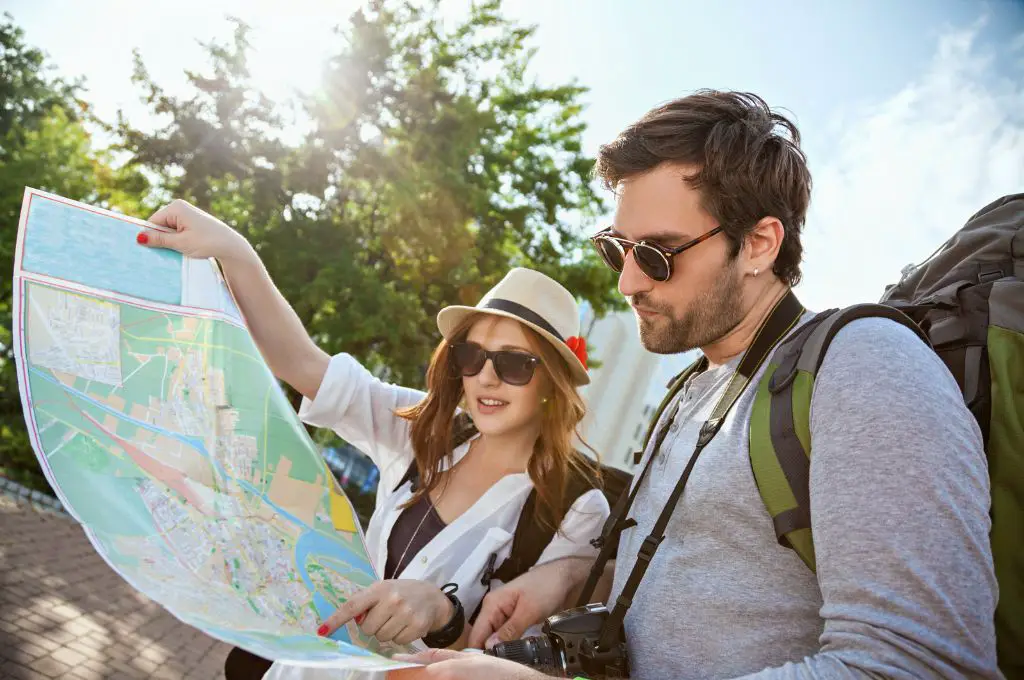
1. Not Researching Which Island to Visit
One of the biggest mistakes when planning a trip to Hawaii is not researching which island best suits their interests and preferences. Each Hawaiian island, including Kauai, Big Island, Maui, and Oahu, offers a unique experience with its own distinct character and attractions.
For example, Kauai might be your dream destination if you’re seeking lush green landscapes with breathtaking waterfalls and dramatic cliffsides.
To truly appreciate the magic of Hawaii without feeling overwhelmed or rushed during your vacation, spending at least 3-5 days on each island you choose to visit is essential.
This will give you ample time to explore the stunning beaches and various budget-friendly activities that allow full immersion in local culture.
Related Podcast: What Is the Best Island to Visit in Hawaii?
2. Planning a Tight Itinerary
One common mistake travelers make when visiting Hawaii is planning a tight itinerary. It’s easy to get caught up in the excitement of seeing this beautiful destination.
However, packing too many activities into your schedule can lead to stress and ultimately detract from the experience.
As tempting as it may be, attempting to visit too many islands on one trip can also prove time-consuming and stressful – not exactly the ingredients for a relaxing vacation! Hawaii’s shoulder season (mid-April through June and September to mid-December) is an ideal time for visiting.
During these months, crowds thin out considerably while accommodation prices drop along with airfare costs.
3. Ignoring Beach Warnings
While exploring the beautiful beaches in Hawaii, paying close attention to beach warnings is crucial. These signs and flags help inform visitors about potential dangers, such as strong currents, riptides, or big waves that could cause serious injuries.
Ignoring these warnings may seem trivial at first but can quickly turn into dangerous situations. I recall witnessing tourists disregarding red flag warnings at Punalu’u Black Sand Beach on Big Island – they ventured far into the water only to struggle back against the unexpected force of high waves.
4. Visiting During High Season
If you’re planning to visit Hawaii, it’s essential to keep in mind that the high season is a challenging time for tourists due to higher prices and crowding.
The high season runs from mid-December to April in the Spring and mid-June to September in the Fall. Prices will rise significantly during this time, and popular attractions will be much more crowded than usual.
Make sure you plan before visiting Hawaii during peak times to get good deals on accommodations and activities without emptying your wallet. If possible, try visiting outside these months or select lesser-known islands such as Hawaii Island (Big Island) or Lanai instead of Oahu or Maui since they are usually less crowded with tourists.
Things to Avoid in Hawaii
Avoid damaging coral reefs and wildlife by refraining from touching turtles, dolphins, and monk seals. Also, make sure to use reef-safe sunscreen.
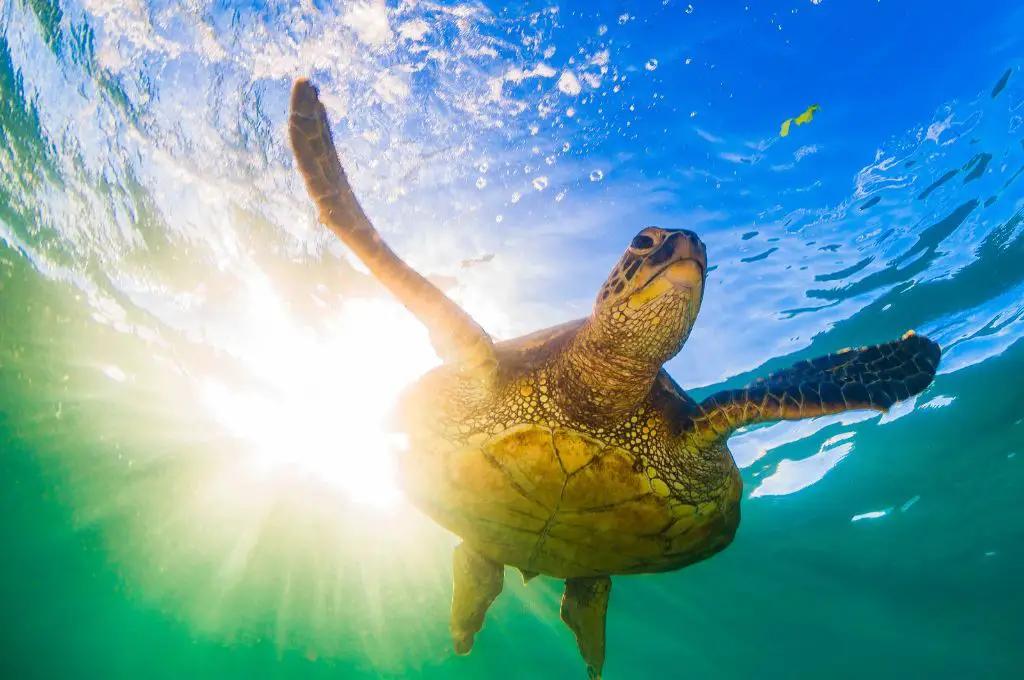
5. Touching Wildlife (Turtles, Dolphins, Monk Seals)
When visiting the islands, crucial to understand the importance of respecting wildlife and their habitats. State and federal laws legally protect endangered animals like the Hawaiian Green Sea Turtle and Hawaiian Monk Seal. This means touching or disturbing them is prohibited.
In fact, if you’re caught bothering these creatures, hefty fines can be issued. It might seem like an incredible opportunity to get close to these unique animals, but please remember that they are not here for our entertainment. Hawaii isn’t Disneyland or Sea World.
Instead of interacting with them directly, observe them from a safe distance while snorkeling or scuba diving, taking care not to touch or disturb their natural environment.
6. Damaging Coral Reefs
One of the most important things to be mindful of is the damage caused by touching or stepping on coral reefs. Coral reefs are incredibly important to the ecosystem and support diverse marine life.
Unfortunately, many visitors unwittingly damage these delicate structures by standing on them, taking souvenirs, or even applying sunscreen that contains harmful chemicals.
Related Podcast: Ali Miller, on Ocean Conservation
7. Wearing Non-reef-safe Sunscreen
When visiting Hawaii, it’s important to be mindful of your actions impact on the environment. This includes choosing reef-safe sunscreen when spending time in the beautiful Pacific waters.
Non-reef-safe sunscreens containing oxybenzone and octinoxate have been linked to damaging coral reefs, a vital part of Hawaii’s ecosystem and economy.
In fact, Hawaii has phased out these harmful chemicals in an effort to protect its precious marine life. Instead, opt for reef-safe sunscreen brands like Kokua, Coola, or Manda instead.
Remember to apply 30 minutes before entering the water and reapply every two hours or immediately after swimming or sweating for maximum effectiveness.
8. Calling Everyone “Hawaiian”
It’s important to note that referring to all locals as “Hawaiian” is inappropriate. Use this term only for those with Native Hawaiian ancestry, and use “Local” when referring to residents of Hawaii of other ethnic backgrounds born and raised in Hawaii. Please take some time prior to your trip to learn about Hawaiian culture.
Driving and Transportation Tips
Renting a car is the best option for exploring the islands, and it’s important to be aware of Hawaii’s unique driving laws and etiquette.
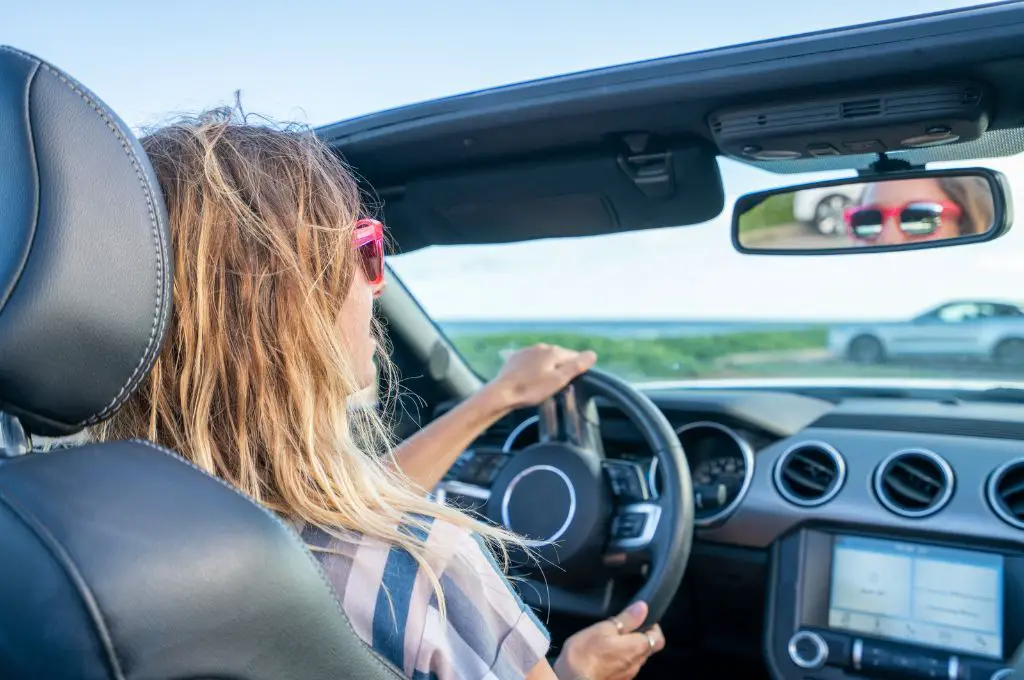
9. Renting a Car vs. Public Transportation
During your Hawaii vacation, deciding between renting a car and relying on public transportation can be challenging. To help you make this decision, consider the following comparison:
| Car Rental | Public Transportation |
|---|---|
| Offers more flexibility and convenience for exploring Hawaii at your own pace. | Limited options and routes, especially outside of Honolulu. |
| Allows you to visit off-the-beaten-path (legal) attractions and hidden beaches. | May not reach all the attractions, limiting your experience. |
| Discount Hawaii Car Rental offers the best rates for top national brands. | Less expensive, but may be time-consuming and crowded during high season. |
| Essential for island hopping and experiencing each island’s unique beauty. | Inter-island travel can be challenging and time-consuming with public transport. |
| Parking and resort fees might add to your expenses, especially in Waikiki. | No additional parking or resort fees. |
| Car break-ins can occur, so lock your doors and don’t leave valuables in the car. | Generally safe, but keep an eye on your belongings and be aware of your surroundings. |
Renting a car is highly recommended for a stress-free and flexible Hawaii experience, allowing you to explore the breathtaking beauty of the islands fully.
10. Driving Etiquette and Speed Limits
As a traveler in Hawaii, it’s important to be mindful of driving etiquette and speed limits. While the speed limits are relatively low on the islands, following them for your safety and that of other drivers is essential.
It’s also critical to avoid honking your horn, as locals may find it rude or unnecessary.
Additionally, when driving through scenic routes like the Road to Hana or North Shore, pay attention to sharp turns and changes in altitude that may induce car sickness. As you drive around Hawaii, always lock your car doors, as car break-ins happen frequently in Hawaii.
Related Podcast: Why You May Want to Reconsider Driving Hana Highway
11. Avoiding Car Break-ins and Theft
Car break-ins and theft are common in Hawaii, so taking precautions to protect yourself and your belongings is essential. One way to do this is by avoiding leaving valuables in rental cars while on the island.
Avoid leaving passports and valuable jewelry inside the vehicle when renting a car, as they may attract thieves. Unfortunately, car break-ins happen frequently on Hawaii’s small island with its high population and the influx of tourists.
Cultural Respect and Understanding
Learn a few Hawaiian words and phrases before visiting Hawaii to show cultural respect and understanding.
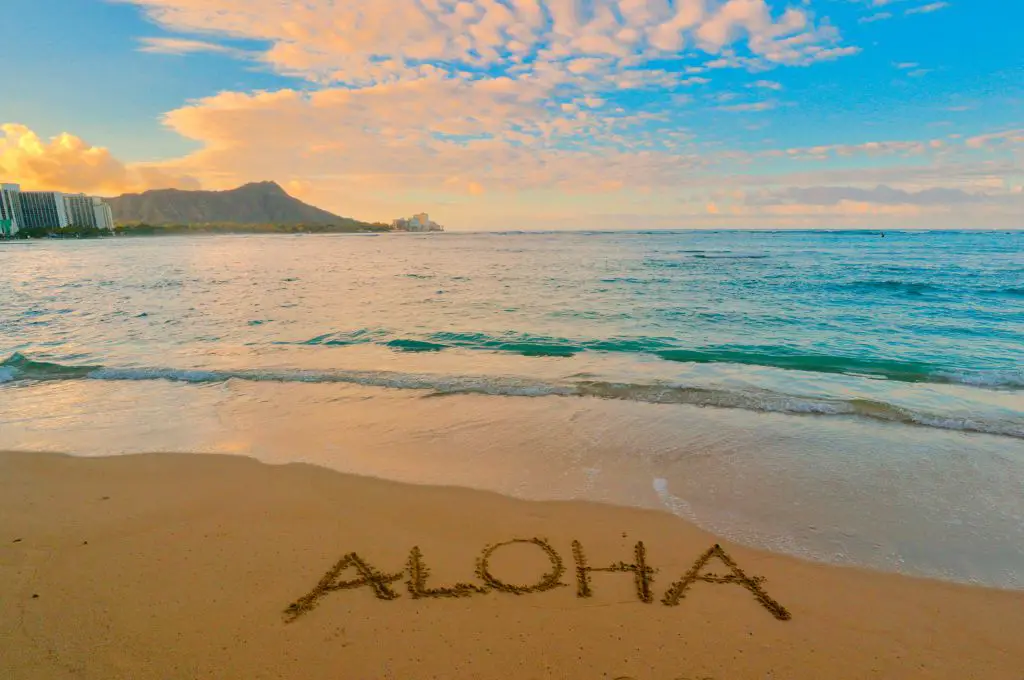
12. Learning a Few Hawaiian Words
Learning a few Hawaiian words is essential to cultural respect and understanding while visiting Hawaii. Using these words can help bridge cultural divides and show respect for the culture of the Hawaiian people.
For example, ‘mauka’ refers to the direction toward the mountains, while ‘makai’ indicates the direction toward the ocean.
Incorporating basic Hawaiian phrases into your vocabulary, such as aloha, meaning hello/goodbye/love, and mahalo, meaning thank you, displays a baseline level of appreciation for Hawaii’s language and culture.
13. Understanding the Significance of Local Customs and Traditions
One of the most important things to remember when visiting Hawaii is to respect and follow local customs and traditions. Hawaiians have a rich culture that is deeply intertwined with their land, history, and spirituality.
For example, removing shoes before entering someone’s home is customary as it shows respect for the space and keeps it clean.
Another important aspect of Hawaiian culture is their connection to nature. Hawaiians believe they are closely connected to all living things, including animals like sea turtles and monk seals found on the islands.
Please avoid touching or bothering these protected species, as it can cause harm or distress to them.
14. Refraining from Taking Lava Rocks and Shells Home
Taking natural elements such as lava rocks, shells, or sand from Hawaii is a common mistake tourists make. However, it is essential to understand that these natural elements hold significant cultural and spiritual values for the locals.
According to Hawaiian legends, taking them away shows disrespect and can bring bad luck or misfortune. Additionally, taking natural elements from the islands is illegal and punishable by fines under state law.
When visiting sacred sites marked with “Kapu” signs or restricted areas, refrain from disturbing any natural elements as they may be considered part of indigenous Hawaiian culture.
Related Podcast: The Legend of Pele
Dining and Food Choices
Try local cuisine instead of sticking to national chains, and be open-minded about trying new dishes.
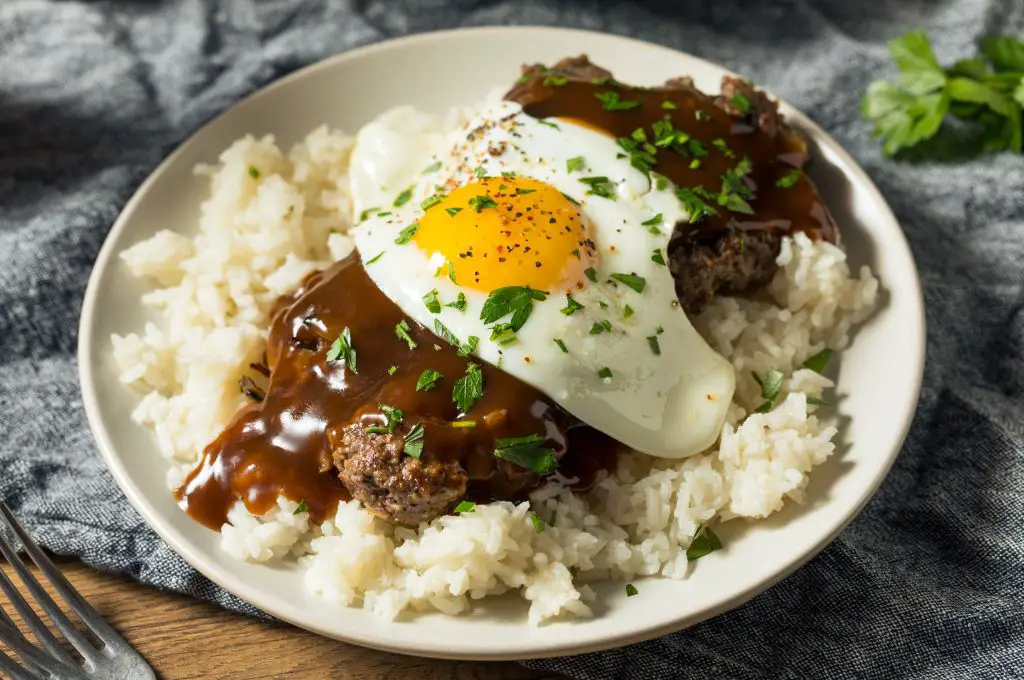
15. Trying Local Cuisine
One of the best ways to experience Hawaii is through its diverse and delicious food. From renowned poke bowls and shave ice to traditional Hawaiian dishes like kalua pig and poi, there’s something for every taste bud.
Don’t be afraid to try new things! Hawaii’s cuisine blends Asian influences from Japan, China, Korea, and the Philippines with traditional Hawaiian flavors.
Local farmers’ markets are packed with fresh produce like exotic fruits such as lychee, mangoes, passionfruit, taro root, and sweet potato.
Trying local food is a must-do when visiting Hawaii because it has a variety of dining and food choices that cater to all palates.
16. Not Expecting Late Dinners
One common mistake tourists make in Hawaii is expecting late dinners. Many restaurants close early, and finding a place to eat after 9 pm can be challenging. (especially on the outer islands, like Kauai).
To avoid disappointment, plan ahead and make reservations for an earlier dinner time or opt for an early dinner instead of a late one. Alternatively, staying in a condo or vacation rental home and cooking dinner yourself is also a good option.
It’s essential to factor food costs into your budget as dining in Hawaii can quickly become expensive due to the high cost of importing goods.
17. Avoiding National Chains Instead of Local Restaurants
If you plan a trip to Hawaii, ditch the national chains and try some local restaurants. Not only do these eateries offer a more authentic Hawaiian experience, but they also support the local economy and community.
In Hawaii, you can find a unique blend of Asian and Polynesian-influenced cuisine that’s unavailable anywhere else. Some popular local dishes include poke (raw fish salad), kalua pig (smoked pork), and shaved ice.
To make the most of your culinary experience, research local restaurants before your trip and make reservations in advance. Local farmers’ markets are also great for fresh produce and locally-made goods.
Some examples of highly-rated local restaurants include Helena’s Hawaiian Food (which has been serving traditional Hawaiian food since 1946) and Nico’s Pier 38 (famous for its seafood options).
Keep in mind that different islands may have varying degrees of accessibility when it comes to finding good-quality local food – Maui has many farm-to-table dining options, while Oahu is more densely populated with tourist attractions and restaurants catering to visitors from all over the world.
Safety and Health Precautions
Apply strong sunscreen to protect your skin from the intense Hawaiian sun, pack appropriate clothing for the climate and heed beach and ocean warnings to avoid accidents or injuries.

18. Applying Strong Sunscreen
As someone who has experienced the intense sun rays of Hawaii, I cannot stress enough the importance of applying strong sunscreen during your trip. The tropical climate in Hawaii means that you will be exposed to sunlight and humidity all day long, making it essential to protect yourself from potential sunburns and skin damage.
To ensure you are properly protected throughout the day, apply a high SPF sunscreen every two hours, especially during peak hours between 10am-2pm when the sun’s rays are at their strongest.
It’s worth noting that reef-safe sunscreen is crucial in Hawaii, as non-reef-safe options can cause harm to marine life and coral reefs. Some popular reef-safe brands include All-Good, Badger, and Coola.
When selecting your sunscreen, make sure it says “reef-safe,” so you don’t risk damaging this beautiful ecosystem just by swimming in its waters.
19. Packing Appropriate Clothing for the Climate
Packing for a trip to Hawaii requires careful consideration of the climate and specific activities you plan on doing. While it may be tempting only to pack shorts and tank tops, bringing additional layers such as lightweight jackets or leggings can be useful for colder evenings or higher altitude hikes.
It’s also important to consider any cultural customs that may affect your clothing choices. Wearing swimsuits in public areas outside of beaches can be seen as disrespectful, so bringing cover-ups or appropriate attire is necessary.
Finally, remember to bring a reusable water bottle to stay hydrated and reduce waste during your travels in Hawaii.
20. Heeding Beach and Ocean Warnings
In Hawaii, beach and ocean warnings must be taken seriously for your own safety. The powerful waves in Hawaii can easily knock you down and sweep you away, leading to serious injuries or even death.
Some popular beaches may have rip currents that are not visible from the shore, so it’s important to check with lifeguards before heading out into the water. Additionally, tourists should avoid swimming alone or after dark when there is less visibility.
Always pay attention to posted signs warning of hazardous conditions such as strong winds or high surf, and don’t hesitate to ask locals for advice on which areas to avoid or where to find safe spots for swimming or surfing.
Activities and Attractions
Choose activities based on your interests and avoid overbooking your schedule, as taking the time to relax and soak up Hawaii’s natural beauty is essential.
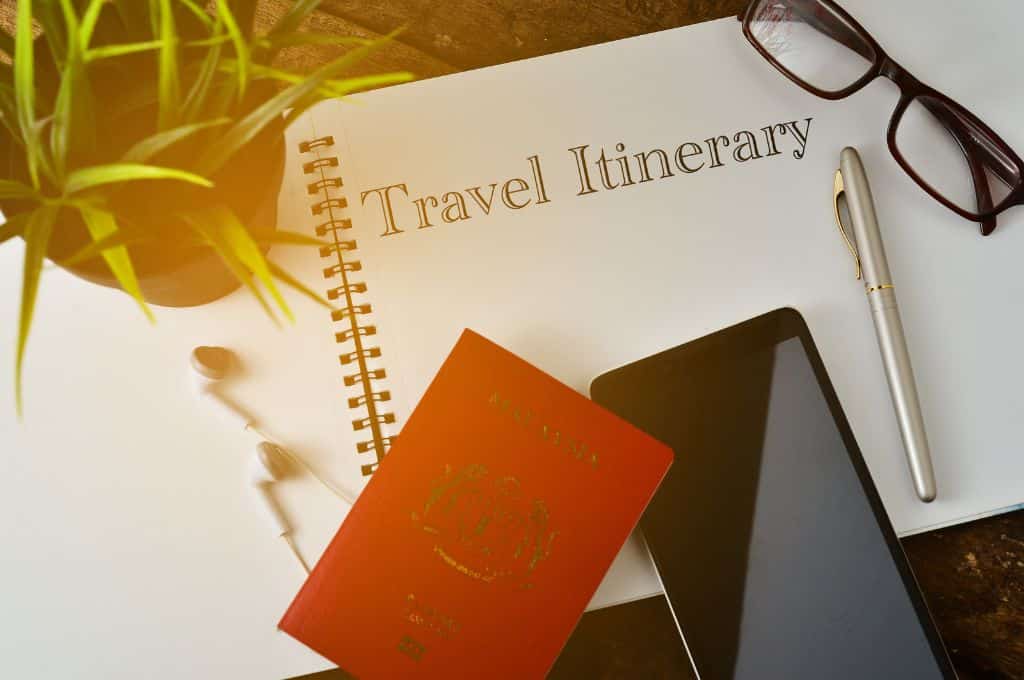
21. Not Overbooking Your Schedule
Trying to fit in as many activities and attractions as possible during a Hawaii vacation can be tempting, but overbooking your schedule can lead to stress and exhaustion.
It’s important to leave enough time for relaxation and spontaneity, especially since Hawaii operates on “island time.” Trust me, you don’t want to spend your entire trip rushing from one place to another without taking the chance to appreciate the sights and sounds around you.
Instead of cramming every activity into each day, prioritize what interests you most and plan accordingly. Give yourself ample time for transportation between locations due to traffic congestion – it’s better to arrive at an attraction with plenty of energy than feeling rushed or stressed out.
Remember that there is more to Hawaii than just popular tourist spots; take the opportunity to explore local markets, relax on scenic drives or unwind on a beach.
22. Choosing the Right Activities for Your Interests
One of the biggest mistakes people make when planning their trip to Hawaii is not choosing activities that match their interests. With so many options available, deciding what to do during your stay can be overwhelming.
Whether you enjoy hiking, snorkeling, or cultural experiences, each island offers something unique and exciting. For example, if you’re a nature lover interested in spotting sea turtles and monk seals up close, head over to Laniakea Beach on Oahu’s North Shore for an unforgettable experience.
If you prefer adventure sports like surfing or kayaking, check out Maui’s famous big surf breaks or take a kayak tour of Kauai’s stunning Na Pali Coast.
23. Avoiding Illegal or Off-limits Locations
It may be tempting to explore Hawaii’s hidden gems and off-beat locations, but tourists should beware of visiting illegal or off-limits areas. Smoking on the beach is against the law in Hawaii, and visitors caught doing so can face hefty fines.
Additionally, touching active lava or venturing too close to it is hazardous and illegal. The Stairway to Heaven hike on Oahu may be a picturesque spot for Instagram photos, but it’s an illegal activity that could result in a fine if caught.
Related Podcast: Traveling with Aloha (a local’s guide)
Budgeting and Expenses
Factor in the high resort fees and parking costs when budgeting for your Hawaii trip, and plan to save money on activities by checking out local farmer’s markets and skipping national restaurant chains.
25. Planning a Realistic Budget for Your Trip
One of the most crucial aspects of planning your Hawaii vacation is budgeting. To avoid overspending, planning and organizing your expenses before arriving on the islands is essential.
Airfare, accommodations, food, car rental or public transportation fees, attractions, and activities will add up quickly.
Take advantage of cost-free activities such as hiking majestic waterfalls or sunbathing at one of many white-sand beaches if you want to save money while still enjoying nature’s beauty.
Avoid expensive gift shops; instead, opt for local farmer markets where fresh fruits and vegetables are available at affordable prices.
Activities and dining are among the biggest expenses during a Hawaii vacation. However, there are ways to save money without sacrificing the experience.
Look for deals on group activities like snorkeling trips or zip-lining tours. Farmer’s markets often offer fresh local produce at reasonable prices, making it easy to whip up homemade meals in your Airbnb’s fully-equipped kitchenette instead of eating out daily.
Another tip for saving money is to do some research before booking any activities or tours. Some attractions, like hiking trails or beaches, may not require an admission fee, while others, like museums or waterparks, may have discount days or package deals available online.
Final Thoughts and Tips
Take the time to learn about Hawaiian history and culture before your trip, embrace the Aloha spirit while you’re there, and make sure to plan your itinerary wisely to make the most of your Hawaii vacation.
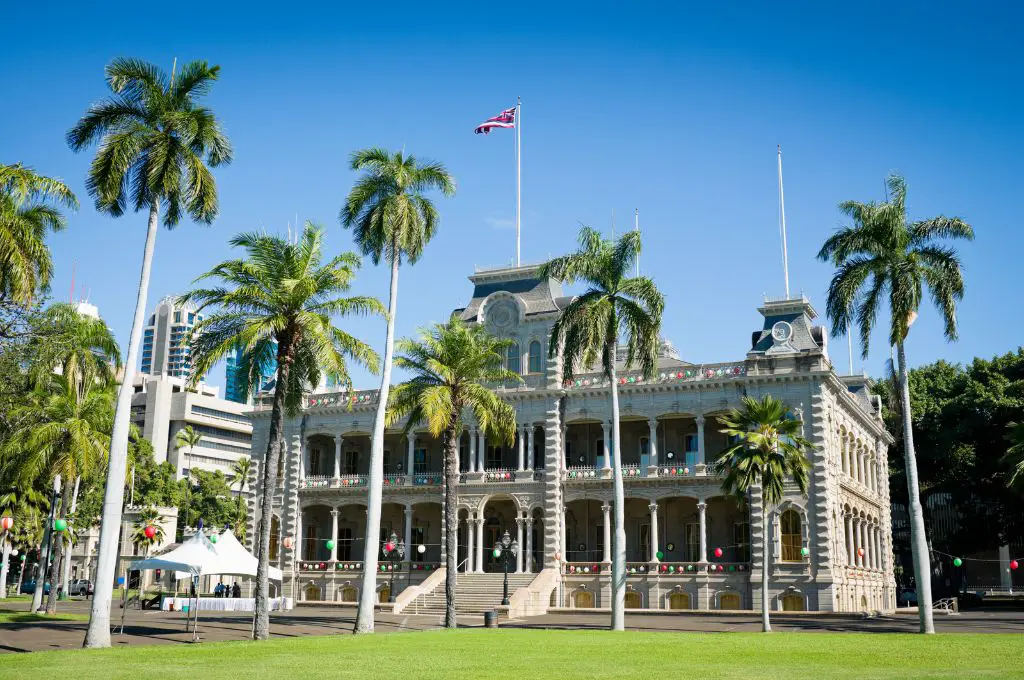
27. Taking the Time to Learn About Hawaiian History and Culture
Learning about the state’s rich history and unique culture as a traveler to Hawaii can enhance your overall experience. Understanding the significance of landmarks like Waikiki Beach or Diamond Head can give you a deeper appreciation for their beauty.
Queen Liliu’okalani‘s memoir, “Hawaii’s Story by Hawaii’s Queen,” provides valuable context about issues in Hawaii regarding tourism and vacation rentals.
Taking a cultural tour of Hawaiian historical sites and visiting museums such as Iolani Palace in Honolulu or Puukohola Heiau National Historic Site on the Big Island is worthwhile.
28. Embracing the Aloha Spirit
To truly enjoy your trip to Hawaii, embracing the Aloha spirit is important. This means treating others with respect and kindness, appreciating nature and the environment, and living in the present moment.
One way to experience this spirit is by attending a traditional luau or visiting cultural sites such as Hawaii Volcanoes National Park. You can also participate in Hawaiian activities like hula dancing or lei-making classes that teach you about their customs and traditions.
Wrap-Up About What Not to Do in Hawaii
To make the most of your Hawaii vacation, knowing what NOT to do is essential. From respecting the local culture and customs to practicing beach safety and avoiding dangerous areas, these tips can help you avoid common mistakes made by tourists in Hawaii.
Remember that Hawaii is home to unique wildlife and protected environments that require careful attention from visitors. Proper planning, cultural sensitivity, and respect for nature allow you to enjoy an unforgettable Hawaiian experience while avoiding pitfalls.
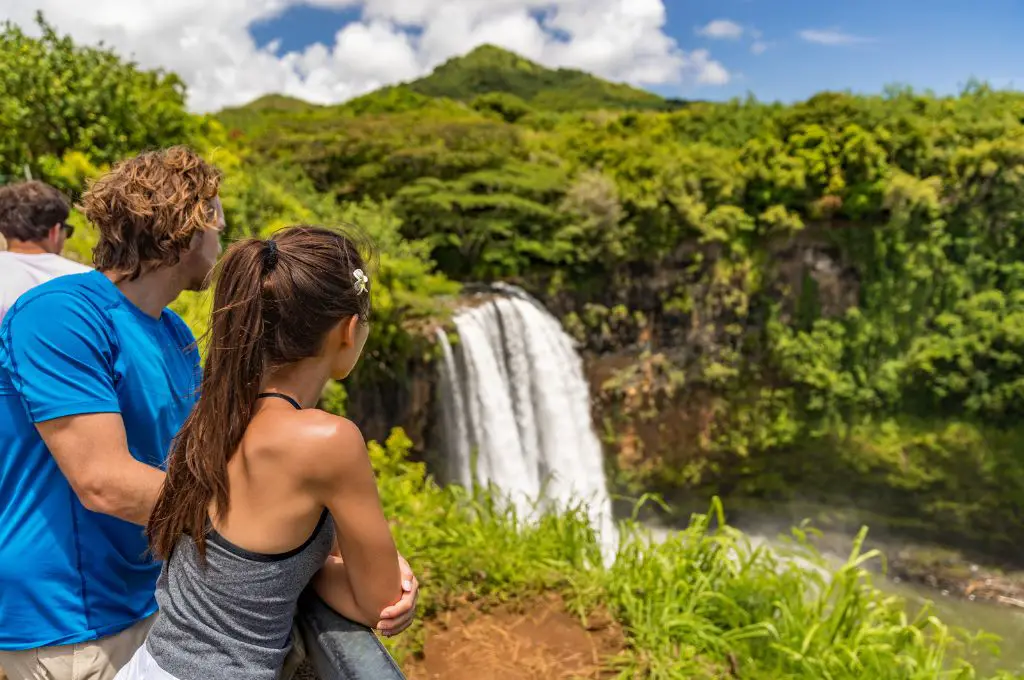
FAQs:
1. What are some common mistakes to avoid when visiting Hawaii?
Some common mistakes to avoid in Hawaii include disrespecting the culture and traditions of the locals, leaving trash on beaches or trails, feeding wildlife, and trespassing on private property.
2. Can I wear my shoes inside homes in Hawaii?
It is considered impolite to wear shoes inside homes in Hawaii and it’s customary for visitors to remove them before entering unless otherwise instructed by their host.
3. Are there any particular behaviors that could offend Hawaiians?
Hawaiians value respect above all else, so it’s important to treat people with kindness and show reverence towards places of historical significance such as burial sites or sacred grounds.
Additionally – many Hawaiians hold cultural practices & customs close at heart so refrain from participating in certain activities without invitation or approval first from those whom hold these practices dear (i.e., luaus).
RELATED POSTS
Ep 126: 5 Mistakes When Planning a Trip to Hawaii
Planning your trip is just as crucial as the journey itself. Today, we're diving deep into the top five mistakes travelers often make when planning...
Secret Falls in Kauai: Essential Tips for a Perfect Visit (Uluwehi Falls)
Credit: Christopher from Salem, OR, USA, CC BY-SA 2.0, via Wikimedia Commons[dssb_sharing_buttons icon_placement="icon" columns="2"...
7 Best Kauai Waterfalls: Your Ultimate Guide to Waterfalls on Kauai
[dssb_sharing_buttons icon_placement="icon" columns="2" _builder_version="4.27.0" _module_preset="default" box_shadow_style_icon="preset1"...
Bryan Murphy, owner of Hawaii’s Best Travel, is a certified Hawaii destination expert from the Hawaii Visitors Bureau. He actively participates in the Hawaii Visitors and Convention Bureau as a member and has a strong educational background focused on local culture and sustainability. As the host of “Hawaii’s Best Travel,” a top-30 US travel podcast, Bryan combines his years of experience with valuable insights. He connects with a broad online community, reaching nearly half a million people, and offers a richer, more responsible way to experience Hawaii.





